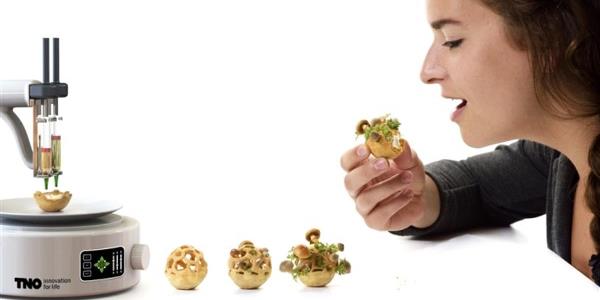Now more than ever, customers expect quality and speed of service when it comes to food and drinks. Robotics and automation can help meet these expectations, while also creating efficiencies. We look at some of the pros and cons of innovative technologies in the catering and hospitality industry.
Unmanned cafes – Automation gone too far?
In July 2017, Hey Zeus opened its doors in Newcastle as the first fully-automated take away restaurant in Australia. For this venue, automation occurs front of house.
Customers use an iPad based kiosk to order and pay for their take away. A few minutes later their order arrives on a conveyor belt. Food is prepared to order and the only time the customer interacts with staff is if they ring a bell for assistance.
Owner, Jacob Beye, has been quick to claim that automating the ordering process is not an attempt to replace staff (although it has). Beye see this as an opportunity to speed up the food preparation process and focus on quality. Maybe he’s onto something because Hey Zeus is still going strong, and now offers online ordering for even more convenience.
Robot Baristas
Melbourne cafe, Once Alike, is Australia’s first completely manual robotic barista. Rocky mimics all of the gestures of a human barista, offering coffee to order without the small talk. Renowned for his consistency and precision in every step of the process, it takes Rocky two to six minutes to make the perfect coffee. He will even start a brew from scratch if it is within a narrow margin of unacceptability.
With ongoing testing and fine tuning, the owners are hoping Rocky will churn out coffee in 60 to 90 seconds. In the meantime, you can order and pay online and then pick up your brew from Rocky the Robot Barista.
Bratwurst Bot
Bratwurst Bot is a completely autonomous sausage cooking robot. It made its debut back in 2016 for a German government sausage party. This robot consists of a robotic arm with tongs, a tablet device for taking orders, camera devices, custom management software, and a barbeque.
Customers place orders on a tablet device while Bratwurst Bot goes about grilling the sausages. Customers can see the remaining cooking time and admire the moustached and smiling face of Bratwurst Bot (on a separate tablet) overlooking the grilling arm.
As with most things manufactured in Germany, Bratwurst Bot cooks sausages with precision and to perfection. If cost wasn’t a factor, we could see Bratwurst Bot making an appearance at school canteens, fetes, music festivals, and at hardware stores.
Self-serve Beer
While we would expect a few licencing and regulatory hurdles here in Australia, self-serve beer stations are gaining momentum in the US.
Customers benefit from being able to access a “beer wall” whenever they want, without the need for queuing at the bar. They pre-pay then tap the access point, select their beer and start pouring. Quantities are limited to two sizes and customers can pour no more than two beers at a time. Wastage is limited and customers only pay for what they pour.
Serving more customers with less staff can help reduce costs, which is good for your bottom line. However, a beer wall probably isn’t suitable for a lot of venues. Importantly, would customers miss the banter with their bartender?
3D Food Printing
Automation and 3D food printing is capturing the attention of many chefs in Europe. Foodini has the ability to prepare entire meals and provide new and innovative ways of presenting food. With five Michelin stars to his name, Catalan chef Paco Perez has used the 3D food printer to create delicate dishes time after time with precision and accuracy.
Unlike chefs, 3D food printers don’t have the ability to taste. Along with cost, this is why we believe 3D food printers won’t be taking the jobs of chefs any time soon. However, we can see 3D food printers becoming another addition to the commercial kitchen.
Table tablet ordering systems
Table tablet ordering systems eliminate wait staff error and speed up the ordering process. Customers enjoy the convenience, speed of ordering, and easy payment.
Chefs can see what’s happening front of house and what’s being ordered. Menus can be adjusted if popular items sell out, while upselling can be automated. Increased efficiencies can lead to higher table turnover and more revenue, and data can provide marketing opportunities.
Table tablet ordering systems offer many advantages, but they aren’t suitable for all restaurant types or customers. Gen X’ers would probably love them, but we think the older demographic would prefer the human interaction.
The Verdict
We love the fact that our industry is committed to improving its product offerings, service, and customer experience. While we believe some new automation and robotic technologies may catch on in Australia, a venue’s budget will probably be the key factor. Perhaps you just can’t replace the personality and skill of your favourite barista, waiter, bar person, or chef with a robot or online app.
Personalised service starts here
Our friendly team a Whomix can assist you with choosing everything from crockery, cutlery and glassware to storage, and chemicals and janitorial items. We can recommend options that provide durability and functionality, but also aesthetic appeal.
Call us on (02) 9052 9111 or complete our online form to ask a question or request a quote. We look forward to helping your business thrive.

